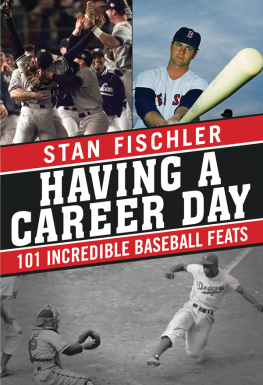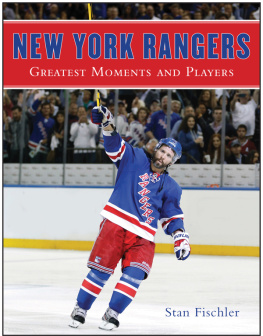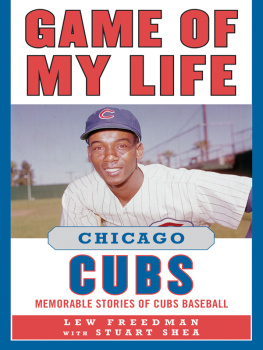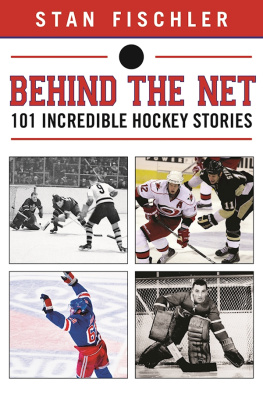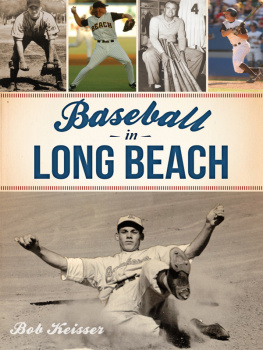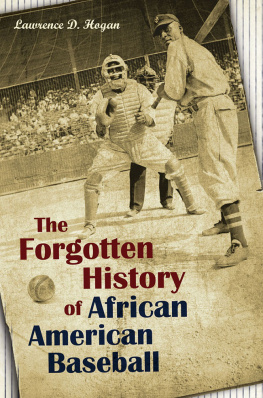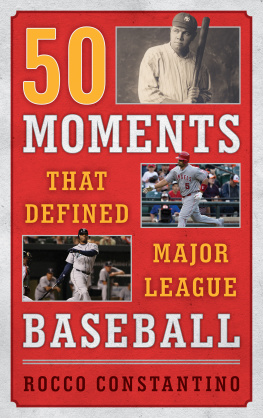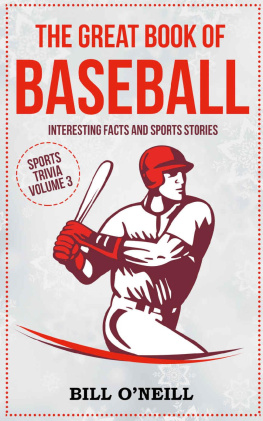Copyright 2014 by Stan Fischler
All Rights Reserved. No part of this book may be reproduced in any manner without the express written consent of the publisher, except in the case of brief excerpts in critical reviews or articles. All inquiries should be addressed to Sports Publishing, 307 West 36th Street, 11th Floor, New York, NY 10018.
Sports Publishing books may be purchased in bulk at special discounts for sales promotion, corporate gifts, fund-raising, or educational purposes. Special editions can also be created to specifications. For details, contact the Special Sales Department, Sports Publishing, 307 West 36th Street, 11th Floor, New York, NY 10018 or .
Sports Publishing is a registered trademark of Skyhorse Publishing, Inc., a Delaware corporation.
All drawings by Joe Sinnott.
Baseball logos courtesy of Thinkstock.
Visit our website at www.sportspubbooks.com.
10 9 8 7 6 5 4 3 2 1
Library of Congress Cataloging-in-Publication Data is available on file.
Cover design by Brian Peterson
Cover photo credit AP Images
ISBN: 978-1-61321-684-2
Ebook ISBN: 978-1-61321-688-0
Printed in the United States of America
O ver the years Ive had the privilege to work with some of the finest baseball people in the pro ranks, but the ones whom I have enjoyed most are special fans, and four in particular.
With that in mind, I hereby dedicate this work to the following:
* Joe Sinnott not only is the brilliant artist responsible for so many Spiderman works, but he also has done many excellent baseball drawings (see inside) and knows the game inside and out. Joe starred for the Saugerties, NY, high school varsity team and assorted other Catskill outfits after he returned from his South Pacific stint with the Navy Seabees. Joe and I have spent many memorable afternoons chatting baseball at Deisings superb eatery in Kingston.
My only gripe with Sinnott is the fact that he never cured himself of being a New York Giants fan.
* Laurie Hemberger is a scholar, a professor at Columbia University, and one of the best friends a neighbor ever had. Unlike Sinnott, Laurie has had the wisdom to be a lifelong rooter for the St. Louis Cardinals. No less impressive is the fact that Hembergers parents were friends of Stan (The Man) Musial, my all-time favorite Cardinal. During the Cards run to their last World Series, Laurie and I had the pleasure of rooting through the downs and ups right up to our hailing their mighty victory.
* The Sultan of Sonic Soul happens to be my Catskill Mountain neighbor in Boiceville. Otherwise known as Gus Mancini, the man makes the most beautiful music out of his assorted saxophones and regularly entertains our Catskill neighbors on WDST Radio as well as gigs at local nightclubs and restaurants. Most of all, Guslike Brother Joe Sinnottwas a Brooklyn high school baseball ace at Lafayette High in Bensonhurst. The Sultans ever-lovin affection for the Brooklyn Dodgers never ceases to impress me. The Sultans taste is impeccable; wish he could have helped Sinnott!
* Nancy Schuckman : During her years at Brooklyn College, Nancy was as good a female shortstop as anyone had ever seen in Kings County. When I began watching her play in the Catskill town of Olive Womens Softball League, the elementary school principal from East New York had moved over to the hot corner. As a third base-woman, Nancy pulled off some of the most sensational fielding plays Id ever seen by anyone, male or female. Better still, she proved to be an admirable neighbor and dear friend, especially at Tisos Trattorio in Mount Tremper and Hoffman House in Kingston, not to mention our dining room.
My list could go on forever, but the aforementioned four are folks who have shared my love of the diamond pastime in unique, special ways. Love to them all.
Contents
Introduction (Or Why I Wrote This Book) |
I love baseball the way I love a double vanilla ice cream cone. This affection began very early in my life. Ebbets Field, home of the Brooklyn Dodgers, was the site of the first Major League game that I ever witnessed live.
It was June 1937. I was all of five years old and taken by my mother to the famed ballpark at Bedford Avenue and Sullivan Place (now occupied by a middle-income housing development).
Brooklyn was playing Pittsburgh that afternoon: an ordinary game, which seemed extraordinary to me. For one thing, I was fascinated by the ballparks architecture. We entered through a majestic rotunda and then made our way to the left field grand-stands by way of sloping concrete ramps.
From our seats we looked out on to a cozy diamond and straight ahead to the impressive right field scoreboard. I dont remember who won the game, but I do recall that Leo Durocher was at shortstop for Brooklyndont ask why I remember thatand the hot dogs were broiled, something I found appalling at the time and still do.
From that point on, baseball became as much a part of my life as Public School 54, Tom Mix on the radio, and building model airplanes.
By 1939, I had become a baseball picture card fanatic. Off-hours were spent at Al and Shirleys candy store on the corner of Nostrand and Vernon Avenues. When the boys werent sipping Franks (12 ounce) Orange Soda, we were plopping down our pennies to purchase baseball bubble gum picture cards.
We paid no mind to the Fleers bubble-gumtossed it away, actuallybut plucked the coveted cards. My favorites hardly were legends. I liked Ernest Gordon (Babe) Phelps, the Dodgers catcher, and Stanley (Frenchy) Bordegaray best.
After buying the cards, our standard sidewalk game consisted of card-flipping. First, one of the lads would flip his card on the sidewalk. Then, his opponent would do likewise. If they matched, the second flipper won the others card. Otherwise, the vice was versa.
I diligently followed the Major League races via my fathers favorite newspaper, (the World-Telegram ), which was the Scripps-Howard flagship evening broad sheet. Its baseball writers included Dan Daniel and Bill Roeder, while Willard Mullin penned the best sports cartoons ever drawn. What I didnt learn about baseball from the papers, I got on the radio via the voice of the Dodgers, Rod Barber, who was still considered the best in the business.
By 1940, the Dodgers had been built into a National League pennant contender and Brooklyn had becomeor so we thoughtthe baseball mecca of the whole, wide world. First baseman Dolph Camilli was poling home runs over the right field fence and onto Bedford Avenue, Whitlow Wyatt starred on the mound, and a Southerner named Fred (Dixie) Walker had emerged as what Brooklynites called The Peoples Cherce.
We didnt win the pennant in 1940, but a year later manager Leo (The Lip) Durocher piloted the Brooksalso called The Flockto the boroughs first pennant since 1920.
Alas, tragedy struck in the World Series. Trailing two games to one to the hated Yankees, the Brooks appeared to have the game wrapped up, leading with two out in the Bombers ninth. Subsequently, reliever Hugh Casey threw a harsh curvesome say a spitballto Tommy Henrich for the third strike and, seemingly, a Dodgers win.
But the ball eluded catcher Mickey Owen, Henrich raced safely to first, and from there the Dodgers completely collapsed. The Yankees rallied for the win and took the Series in five games. For Brooklynites such as myself, it was a borough-wide tragedy that never will be forgotten.

